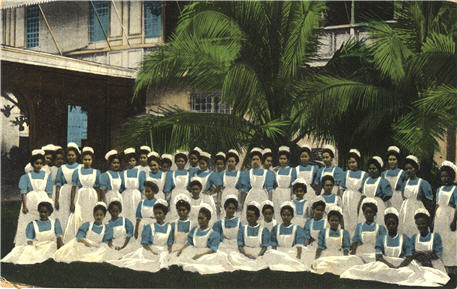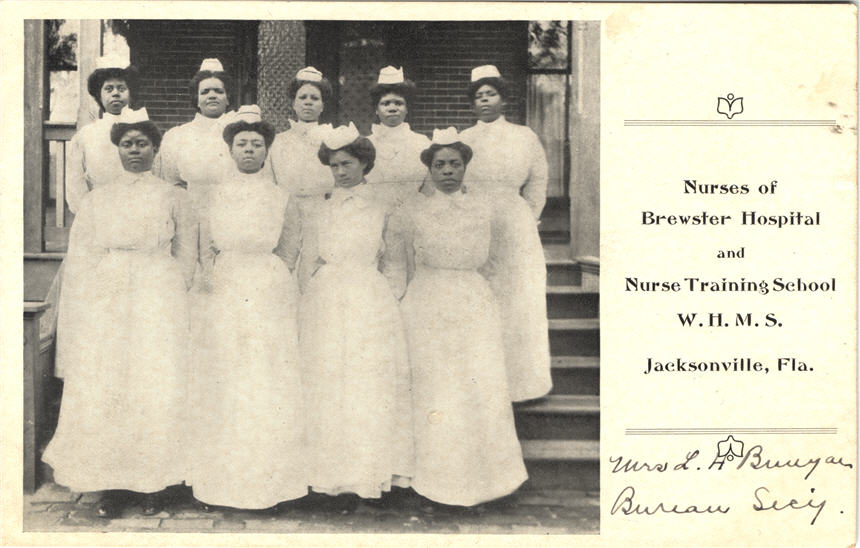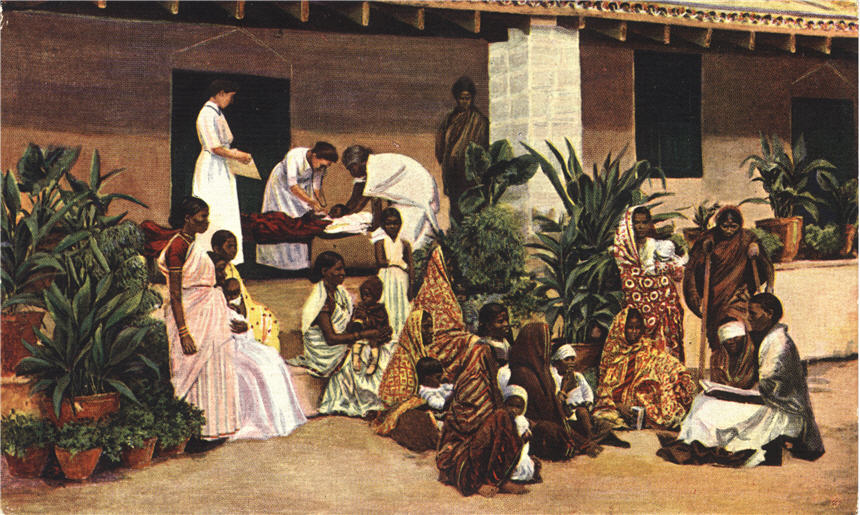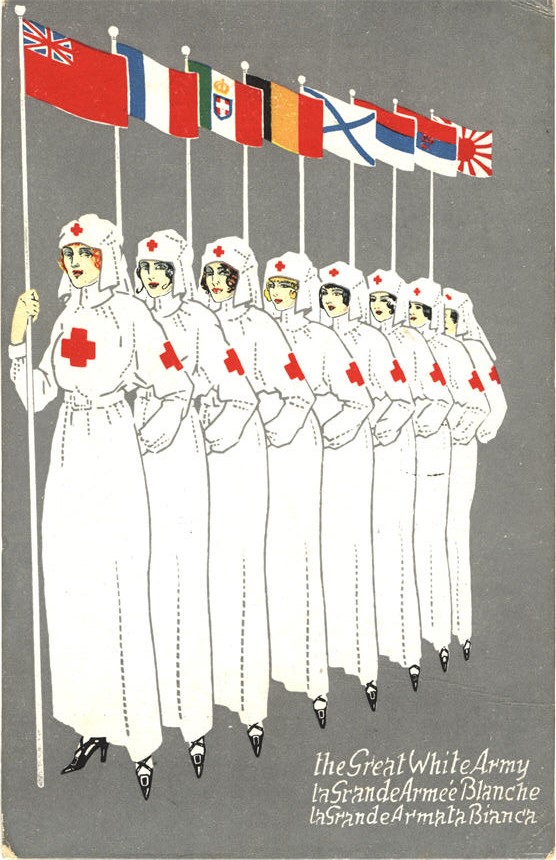Social reformers in the mid to latter half of the 19th century believed that White, middle-class respectability should form the basis of the “ideal” nurse. These attitudes shaped how the profession of nursing responded to people of lower classes and different races, and influenced the way the profession developed in the United Kingdom and United States as well as Europe’s overseas empires.
In countries where missionary women worked as teachers and nurses, these hierarchies of class and race became entrenched. For people from the area, segregation and second-class status were consequences of this ordering of human worth and value.
Nurses from the George A. Brewster Nurse Training School pose for a group portrait, Jacksonville, FL, 1908
The George A. Brewster Hospital opened in 1901 to treat African American victims of the Great Fire of Jacksonville, which left ten thousand people homeless.
Illustration of a balcony dispensary missionary hospital, India, ca. 1910
Produced by All-British Picture Co., London
Medicines and nursing care were frequently provided to women and children from balcony dispensaries attached to missionaries’ homes. Some of these dispensaries evolved to become missionary hospitals.
The Great White Army, Italy, ca. 1915
This promotional postcard produced as part of a fund raising campaign by the Italian Red Cross depicts the flags of the allied nations committed to supporting the Red Cross in 1915.






